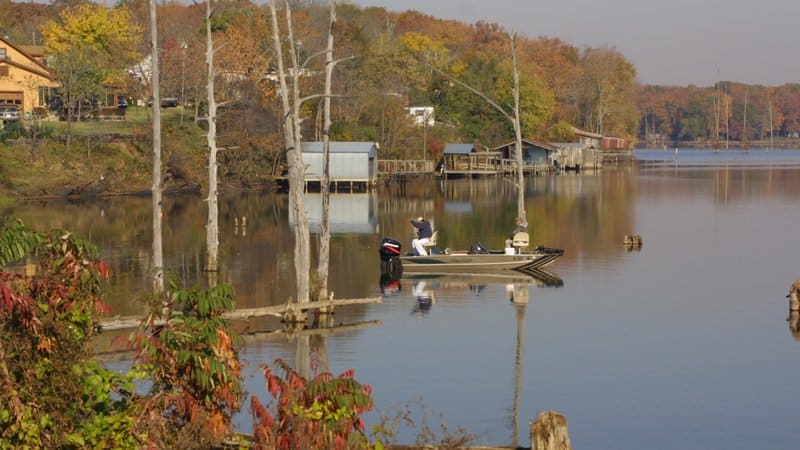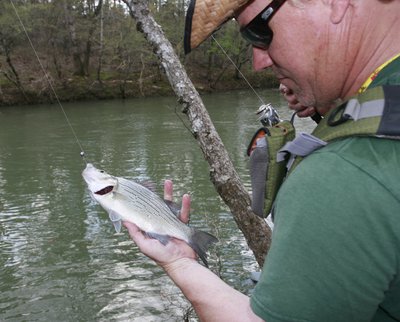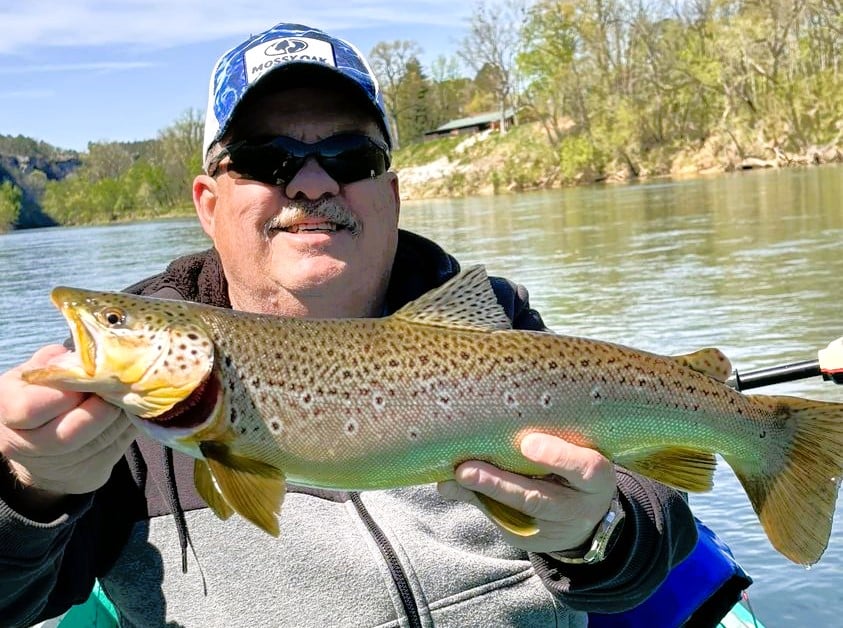Fall fishing heating up in The Natural State
BY Chuck Long
ON 10-07-2020

Oct. 7, 2020
Chuck Long
AGFC Northeast Regional Educator, Jonesboro
JONESBORO — As the temperatures drop and the leaves change color, the thoughts of most Arkansans turn to the pursuit of deer, ducks, squirrels and other game. Fishing is put on the back burner, but the changing seasons and dropping temperatures will spur the fish of Arkansas into a feeding frenzy that can lead to some of the best angling days of the year.
As waters warm in the early months of the year, fish are spurred to the shallows looking to spawn. Initiated by water temperature, this move to the shallows can occur at different times for different species, thus providing target species at different times. But during the fall months, all these species are driven to congregate by the need to feed before winter sets in. This provides anglers with a possible mixed bag on any given day. Fall fish are there to feed and their voracious appetites make them great targets for a day on the water.
The fall feed occurs on lakes, rivers, streams and creeks and each one provides an angler with great opportunities. These fish will also fall for a wide variety of baits, thus allowing an angler to be successful with their favorite style of fishing.
Fish in large, clear-water upland impoundments often follow large schools of shad. These shad are also trying to feed before winter sets in and can be found on long points, drop-offs and brush piles. Small crankbaits can be good, but the fish might also hit spoons or even topwaters. Perhaps one of the most overlooked lures for fall fishing is a 3-inch paddletail grub. Fished on a ⅛-ounce jighead, a smoke or pearl grub will catch most any fish in the lake, including bass, crappie, white bass, stripers and even an occasional catfish.

In smaller lowland lakes, the fish tend to venture toward shoreline cover. Cypress trees and brush piles, especially those that might be in a little deeper water are often used as ambush points by hungry fish. Smaller lakes provide a little more targeted fishing, so lures like a jig and pig and spinnerbaits can produce bass. Crappie in these lakes will fall for the standard crappie jigs in a color appropriate for the water. In clearer water, natural colors like smoke and pearl will produce, while dirtier water may call for a red or black with chartreuse. A 1/16-ounce jighead with a jig in the 2- to 3-inch range will be very appealing to a crappie trying to beef up for the winter.
Flowing waters offer their most interesting fishing of the year as the leaves change and begin to fall. Many species of fish that inhabit rivers and streams will begin to feed aggressively and often stack in large numbers in the same general locations in search of food. A very important tool in fishing a river is being able to read the river and its current flow. Falling leaves can provide a great clue of likely locations to cast a line. As the leaves fall and settle on the water’s surface, they will flow downstream with the current and these flowing leaves will tell an observant angler exactly where to cast. Eddies, backflows and current breaks will be evident by the actions of the leaves on the surface, thus indicating likely locations a fish could be using as an ambush point.
A white or white/chartreuse spinnerbait is a tried and true lure for river bass in the fall. Targeting eddies and backflows with a jig and pig or a creature bait can also be very effective. Once again, the traditional crappie jigs will catch papermouths and a variety of other species, but a step up to a slightly heavier jighead and a slightly larger profile jig can be very productive. A black-and-chartreuse jig fished slowly in an eddy or behind a current break can fill a cooler with river crappie.
Whether it be a river or lake, fall is a great time to be on the water. Not only are the fish actively feeding, the crowds have dwindled and the scenery can be spectacular. Check out agfc.com under the “Fishing” tab for some ideas of where to go and a weekly fishing report.
Recent News

Arkansas Wildlife Weekly Fishing Report
Apr. 18, 2024
Subscribe to Our Weekly Newsletter E-mails
Don’t miss another issue. Sign up now to receive the AGFC Wildlife Weekly Newsletter in your mailbox every Wednesday afternoon (Waterfowl Reports are published weekly during waterfowl season and periodically outside the season). Fishing Reports arrive on Thursdays. Fill in the following fields and hit submit. Thanks, and welcome!

